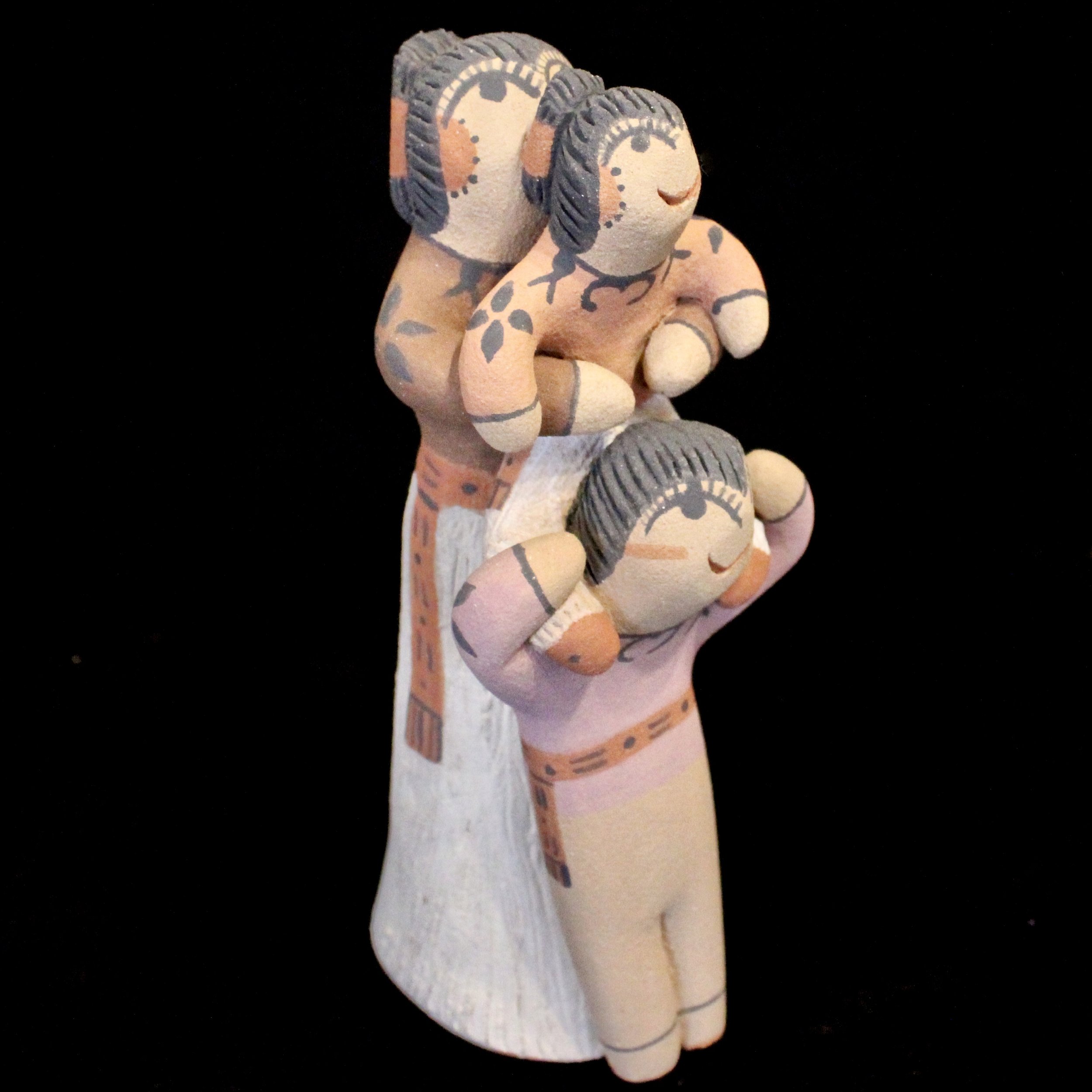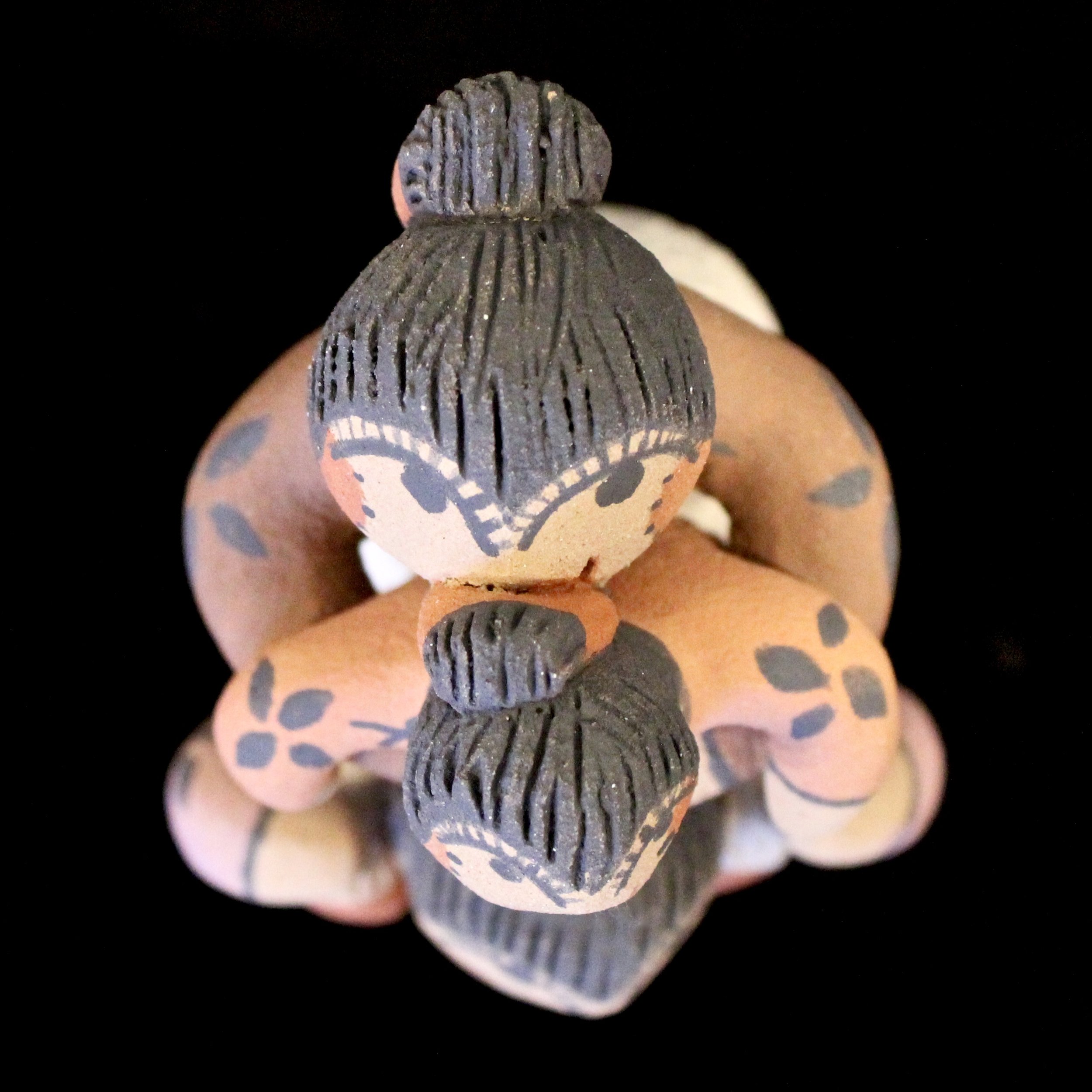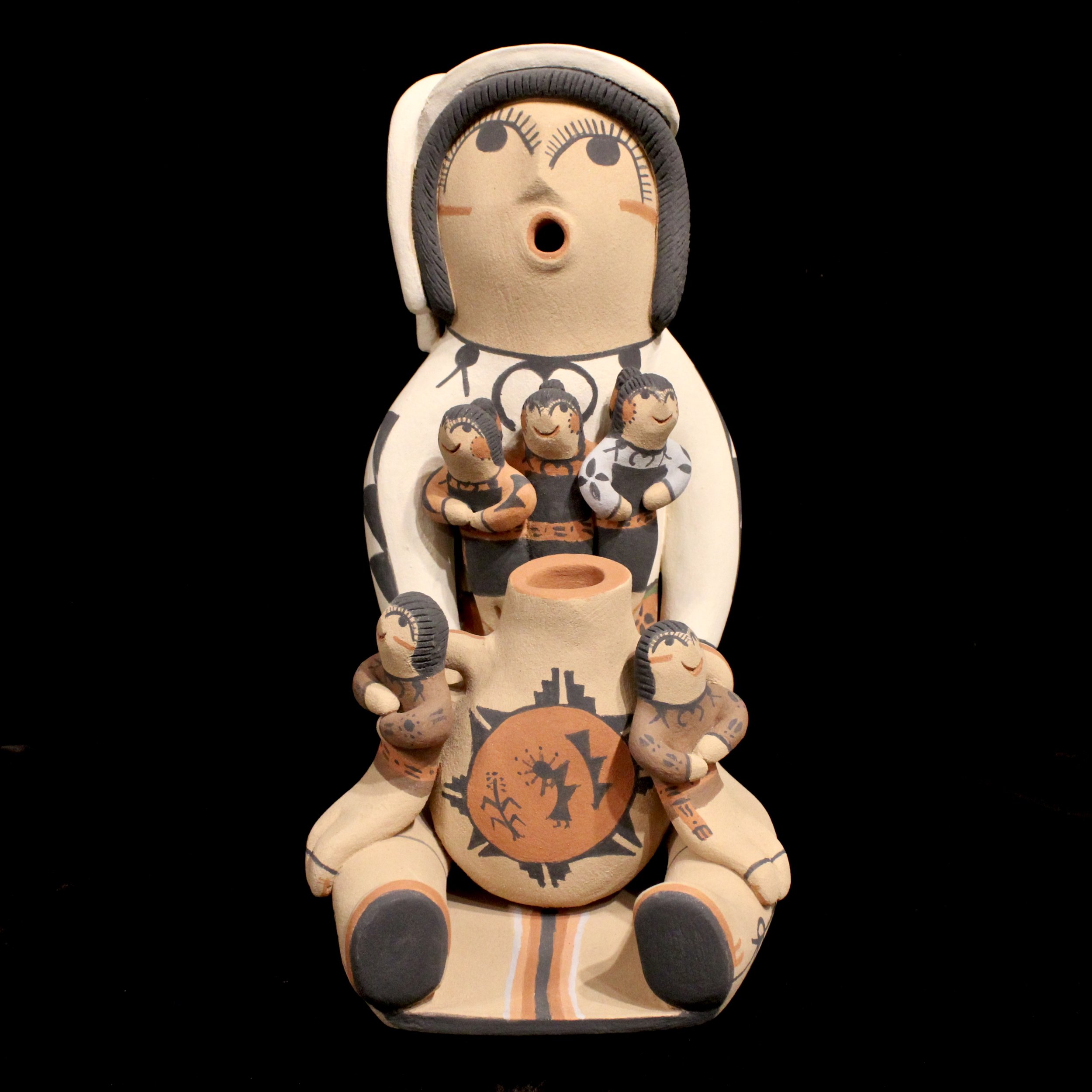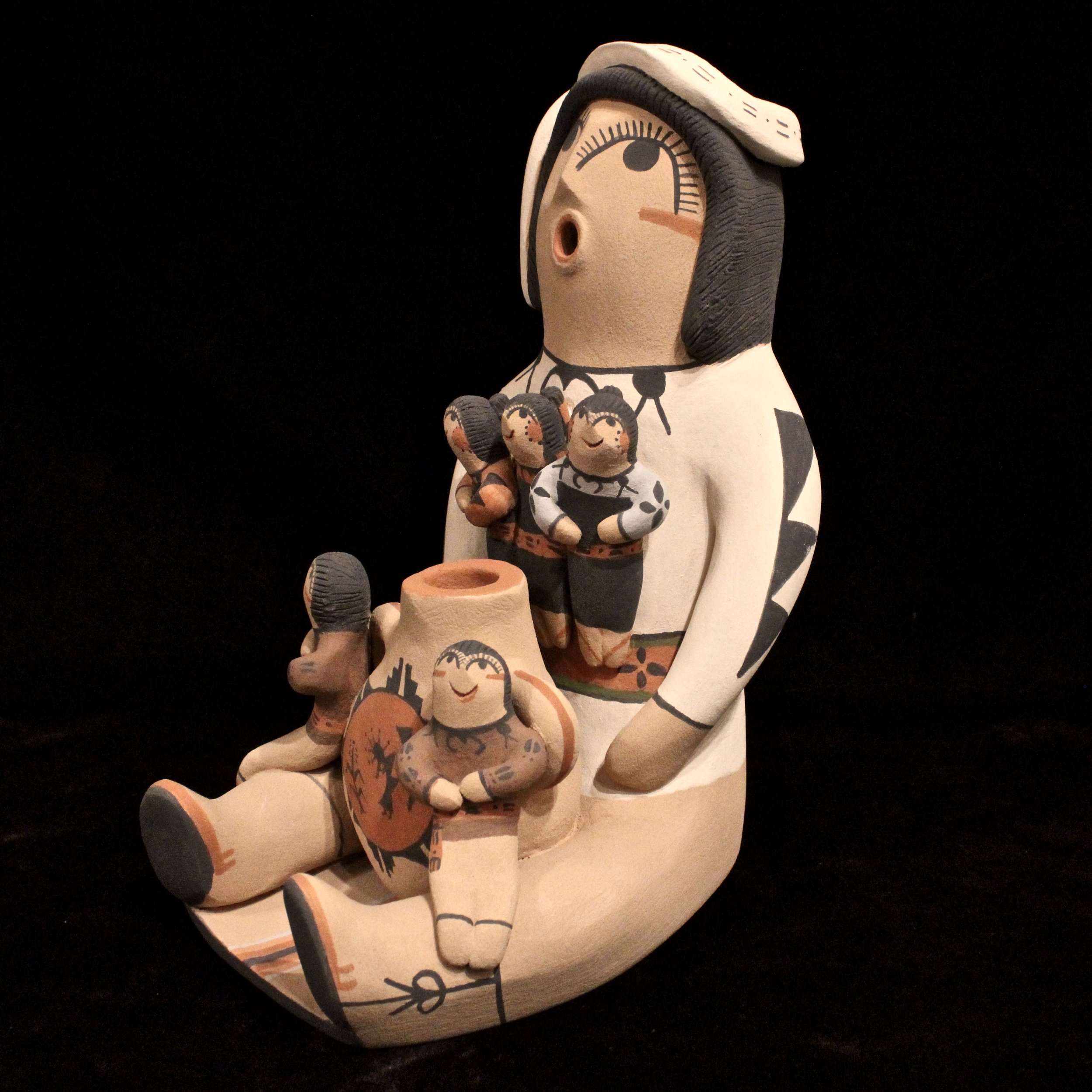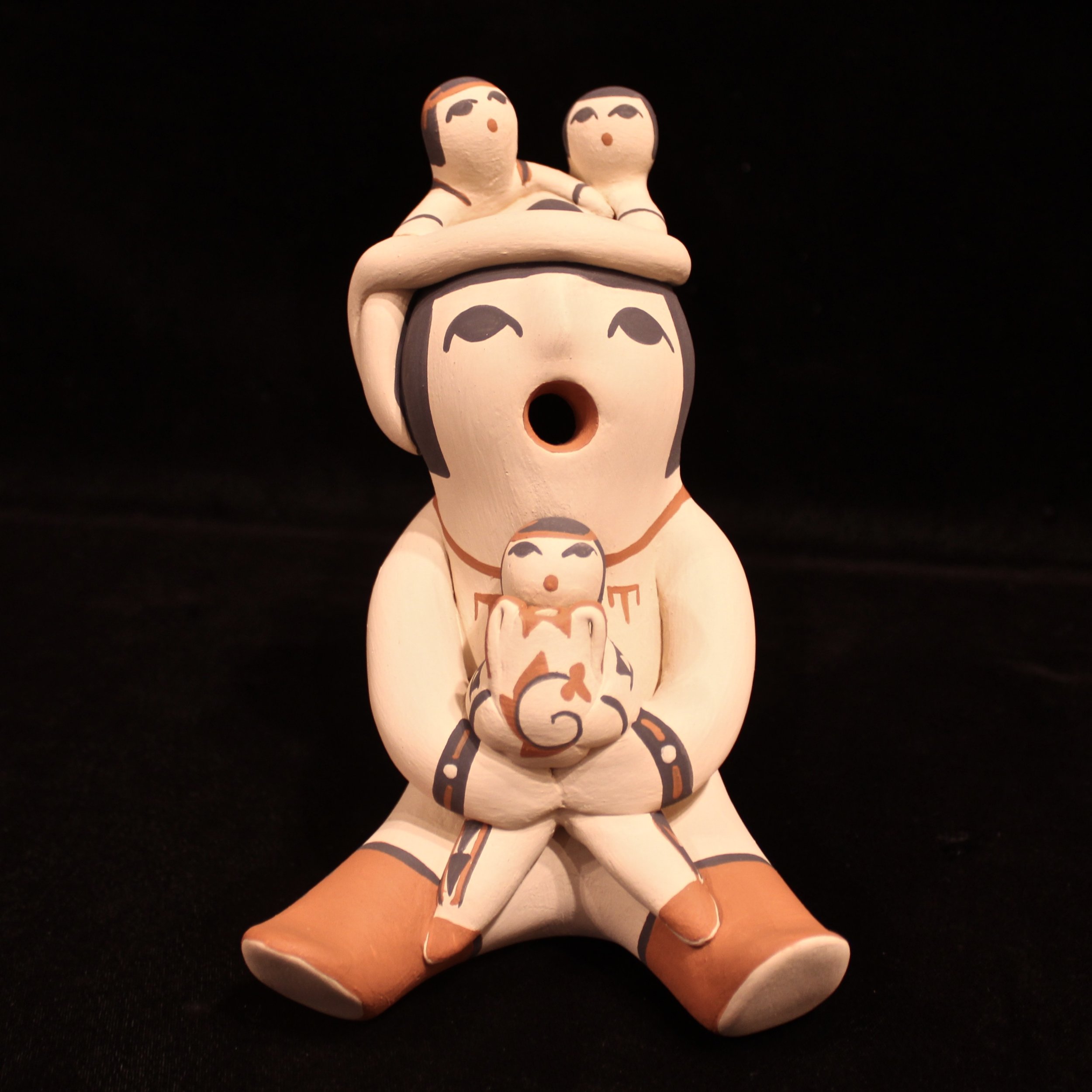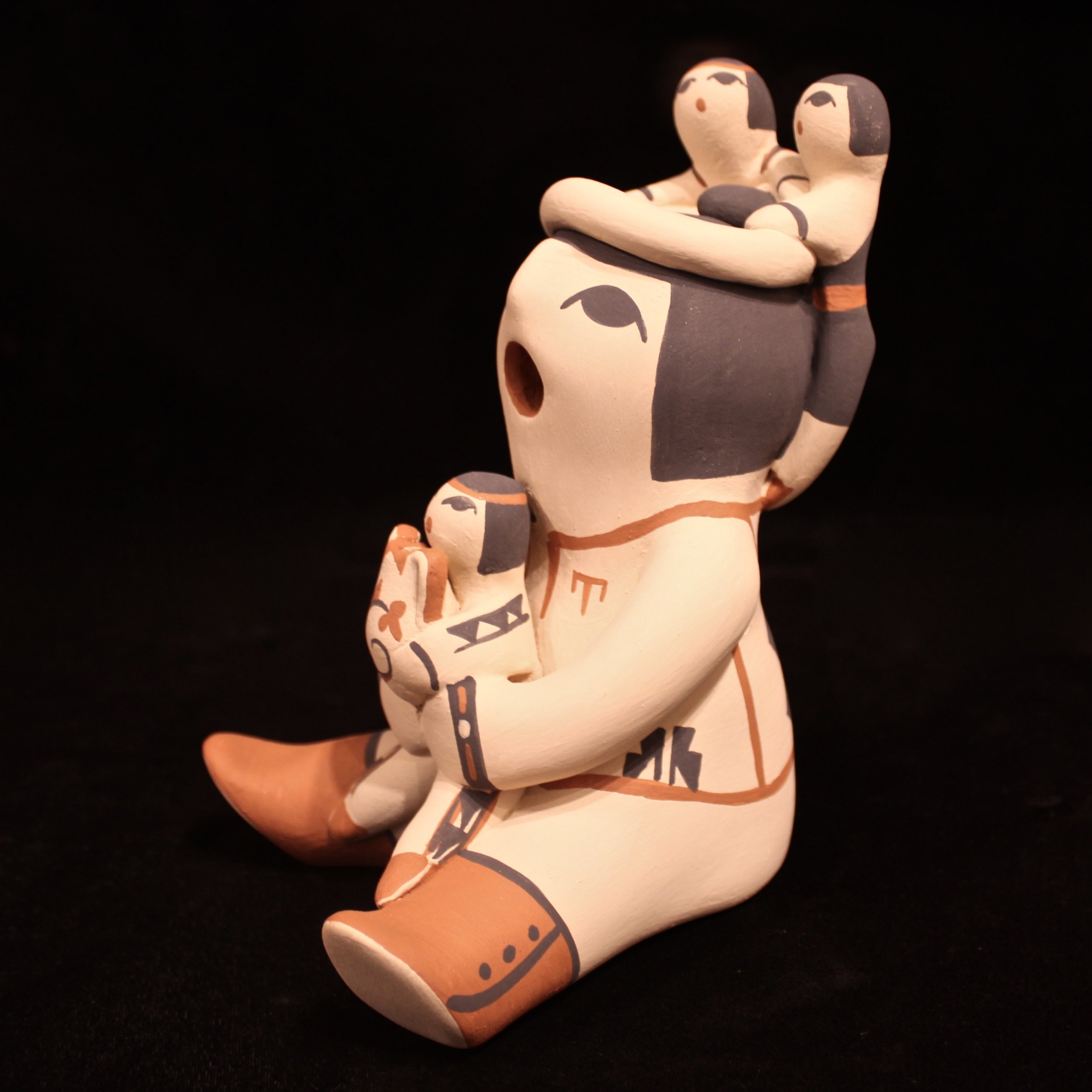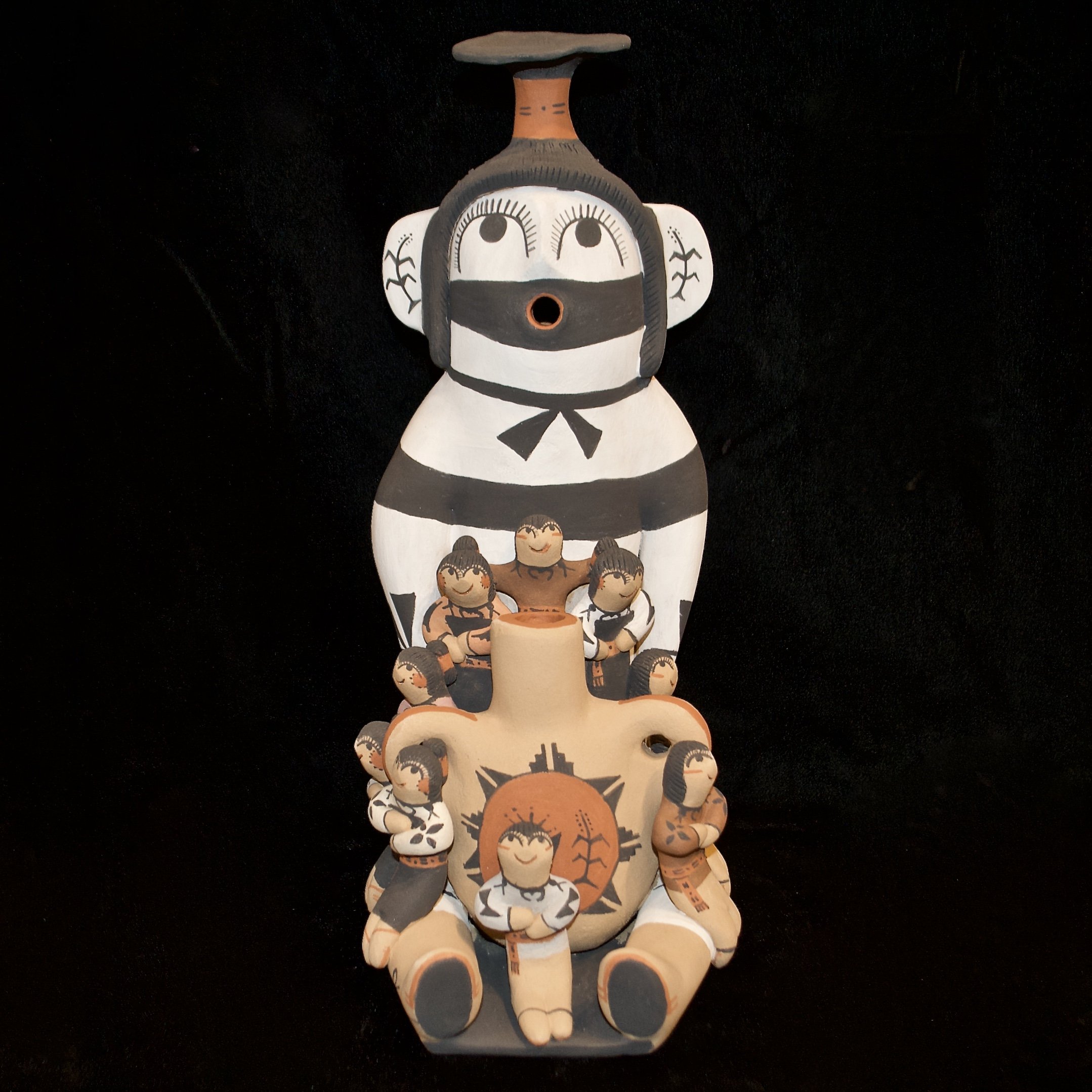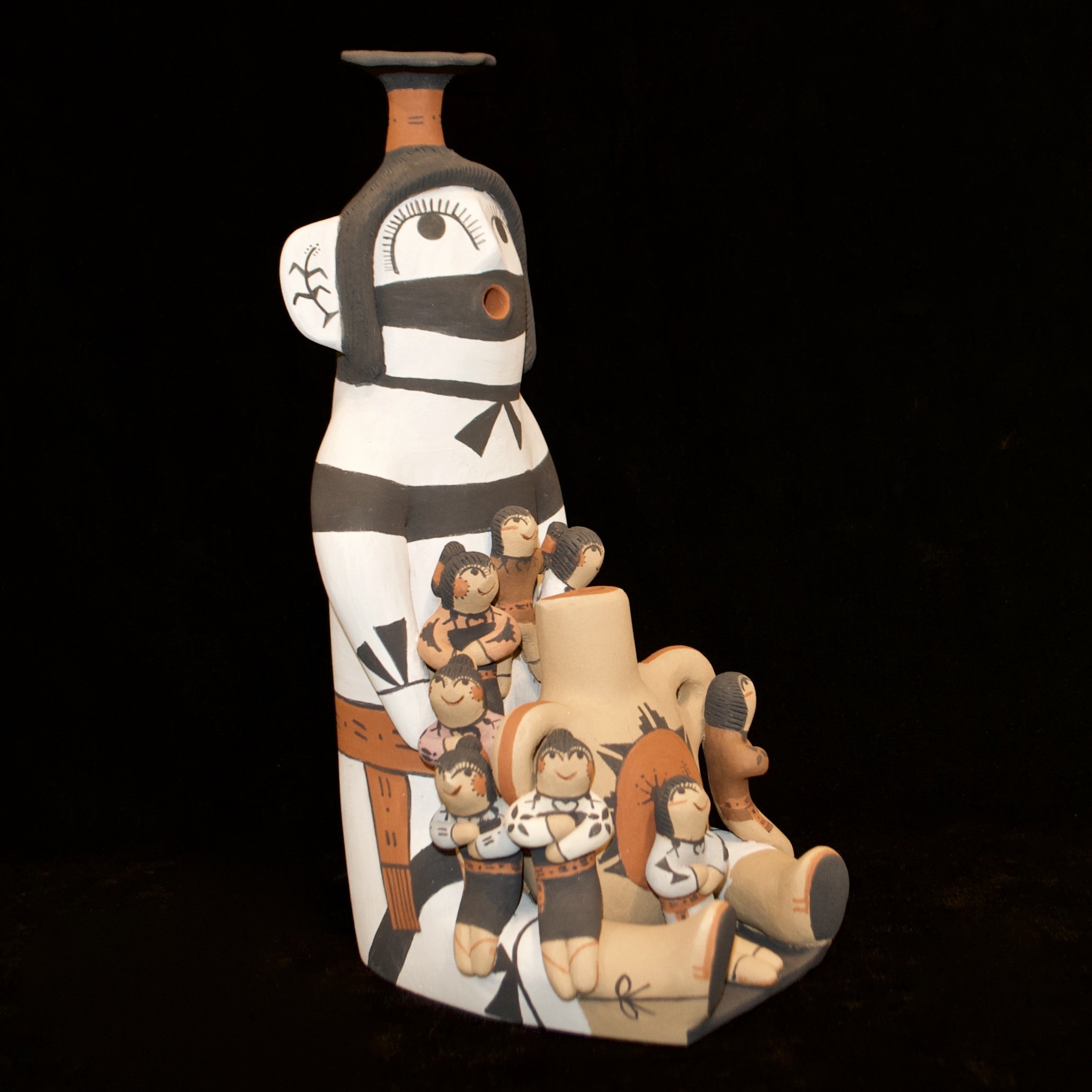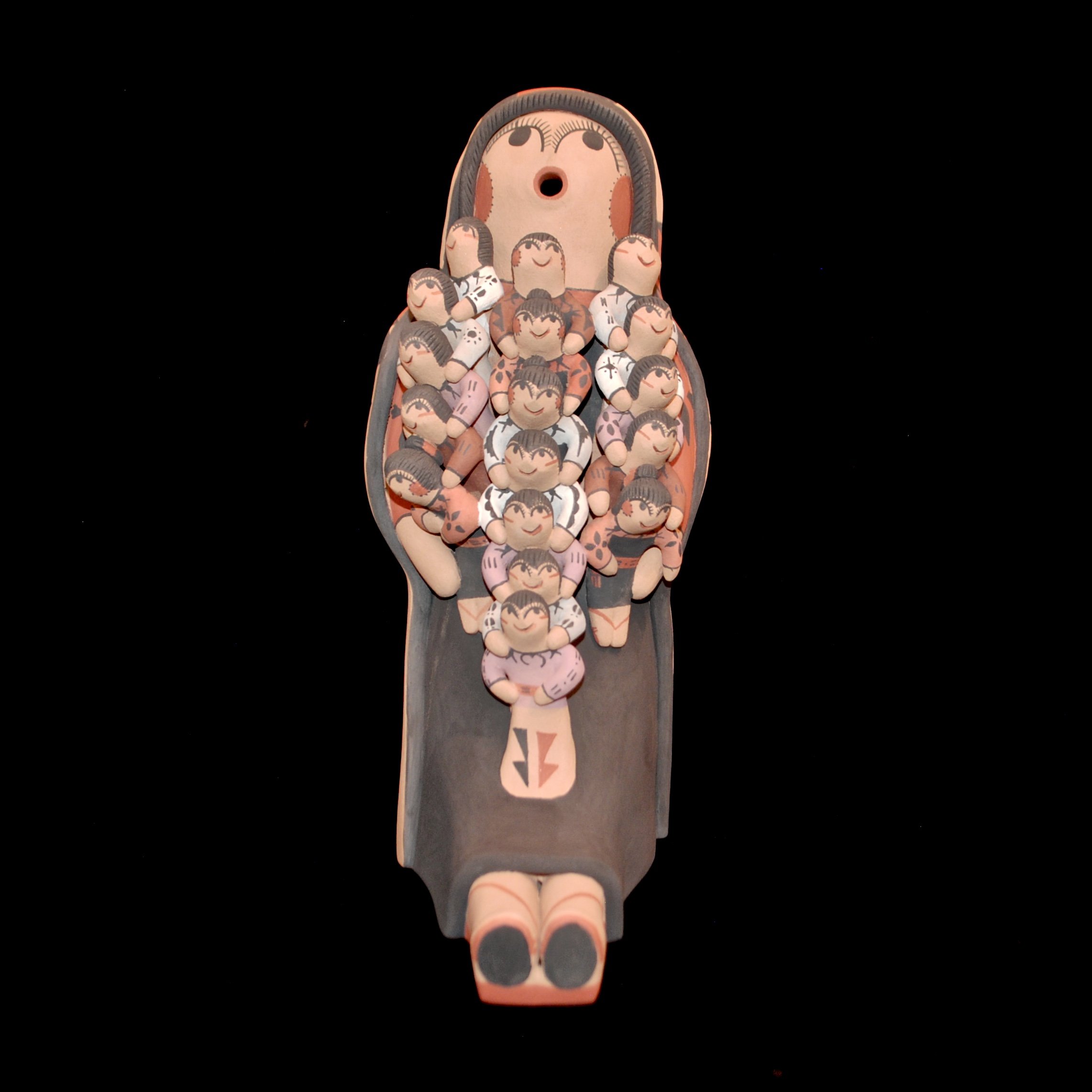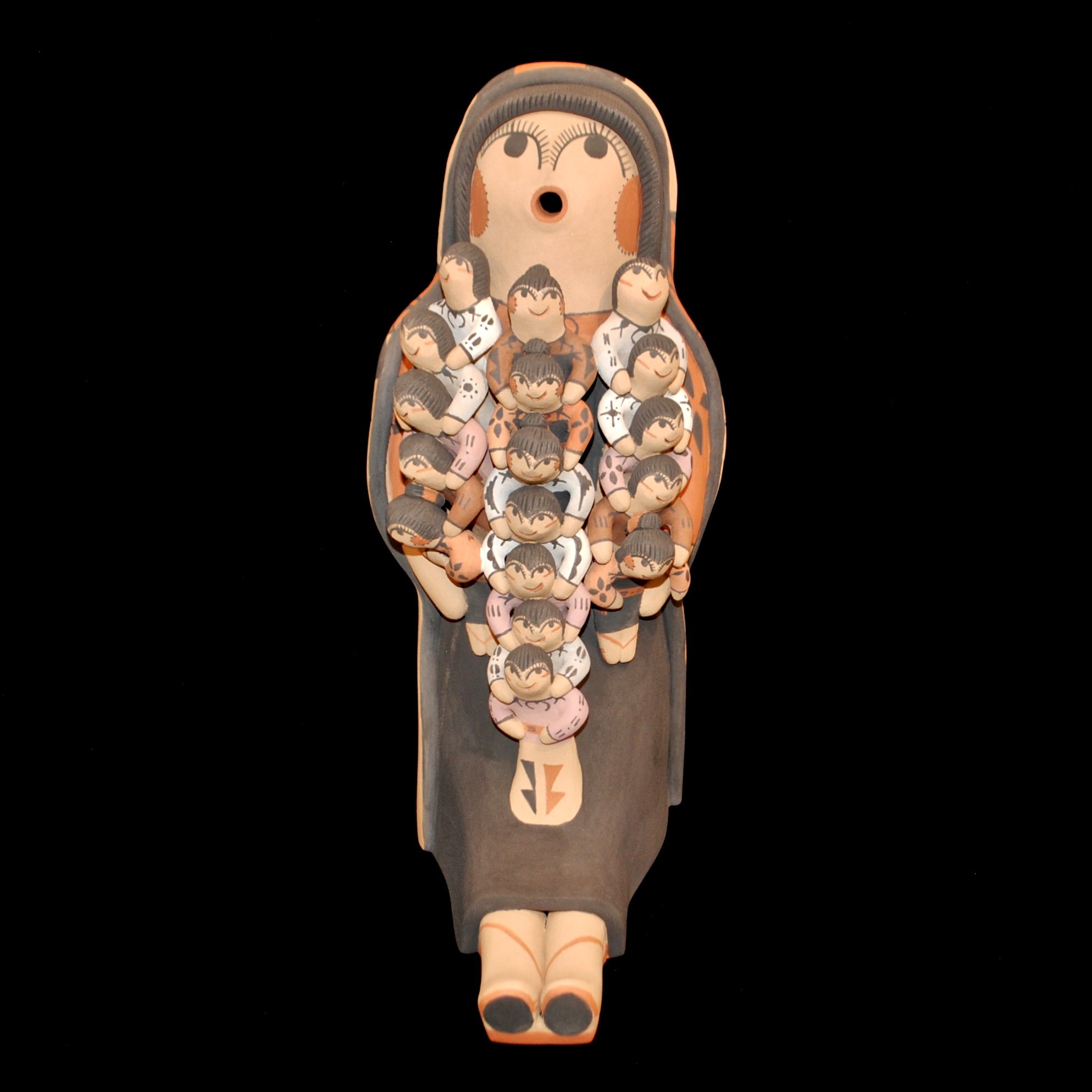- Pottery
- Large Jemez 51 Baby Pueblo Storyteller by Clifford Kim Fragua
Large Jemez 51 Baby Pueblo Storyteller by Clifford Kim Fragua
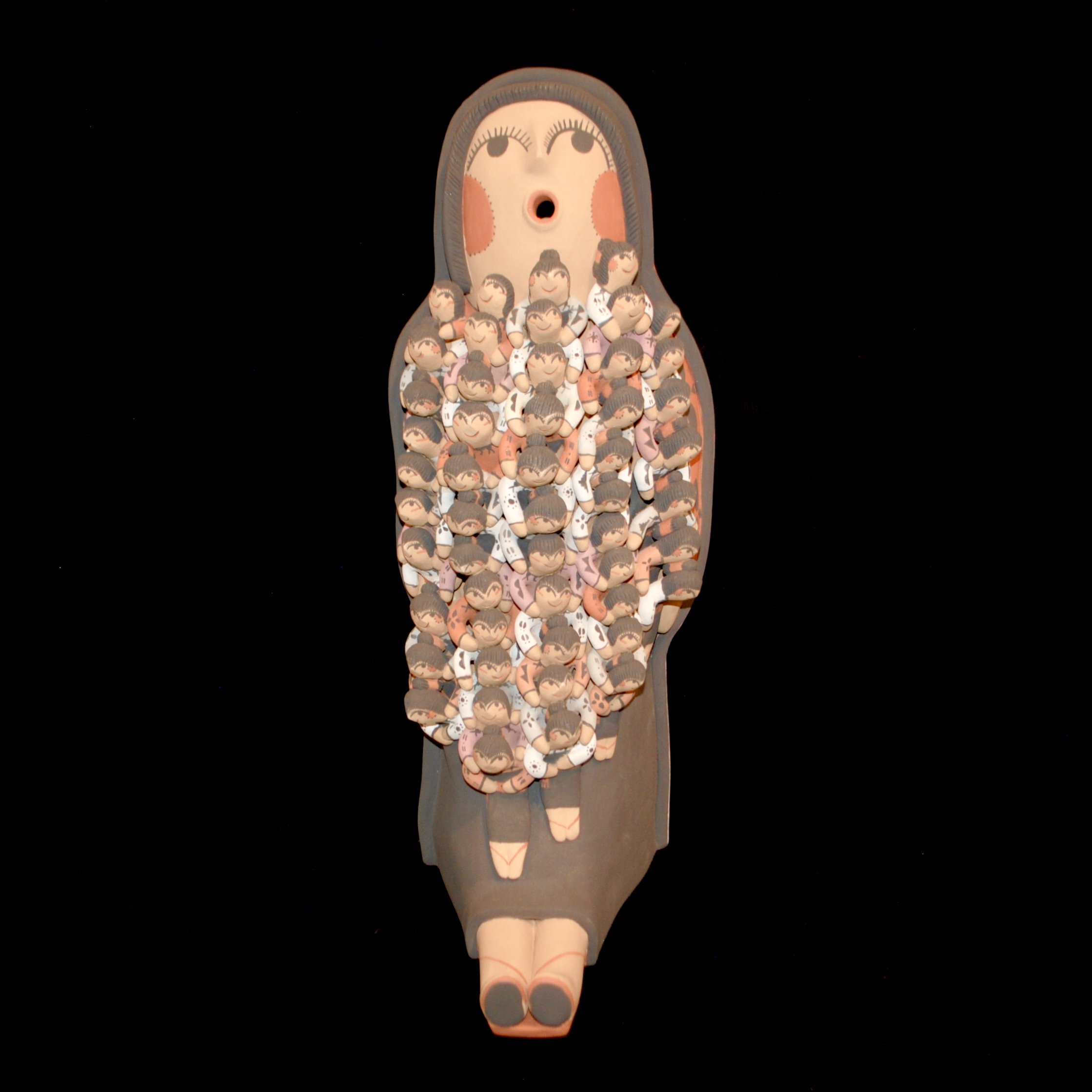
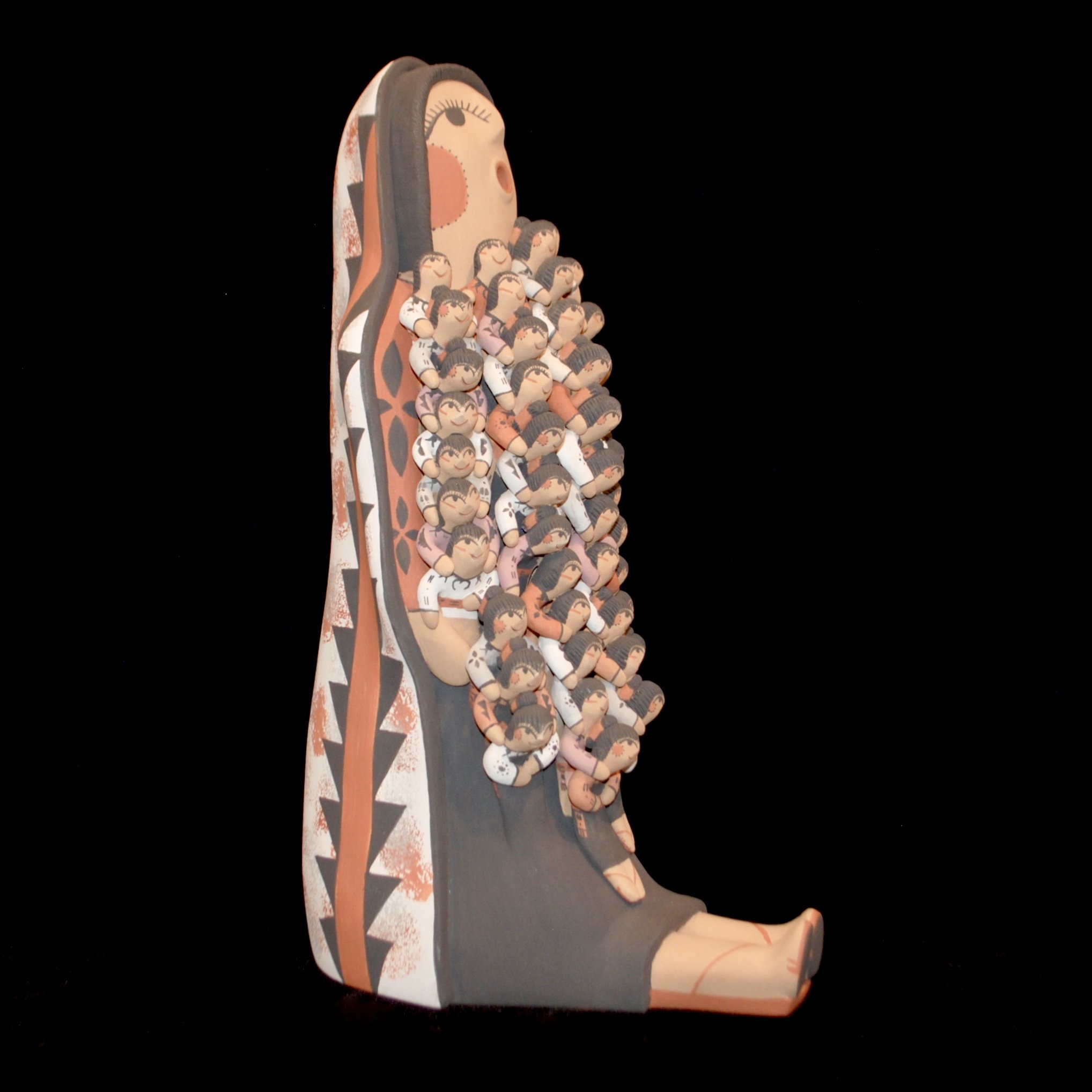
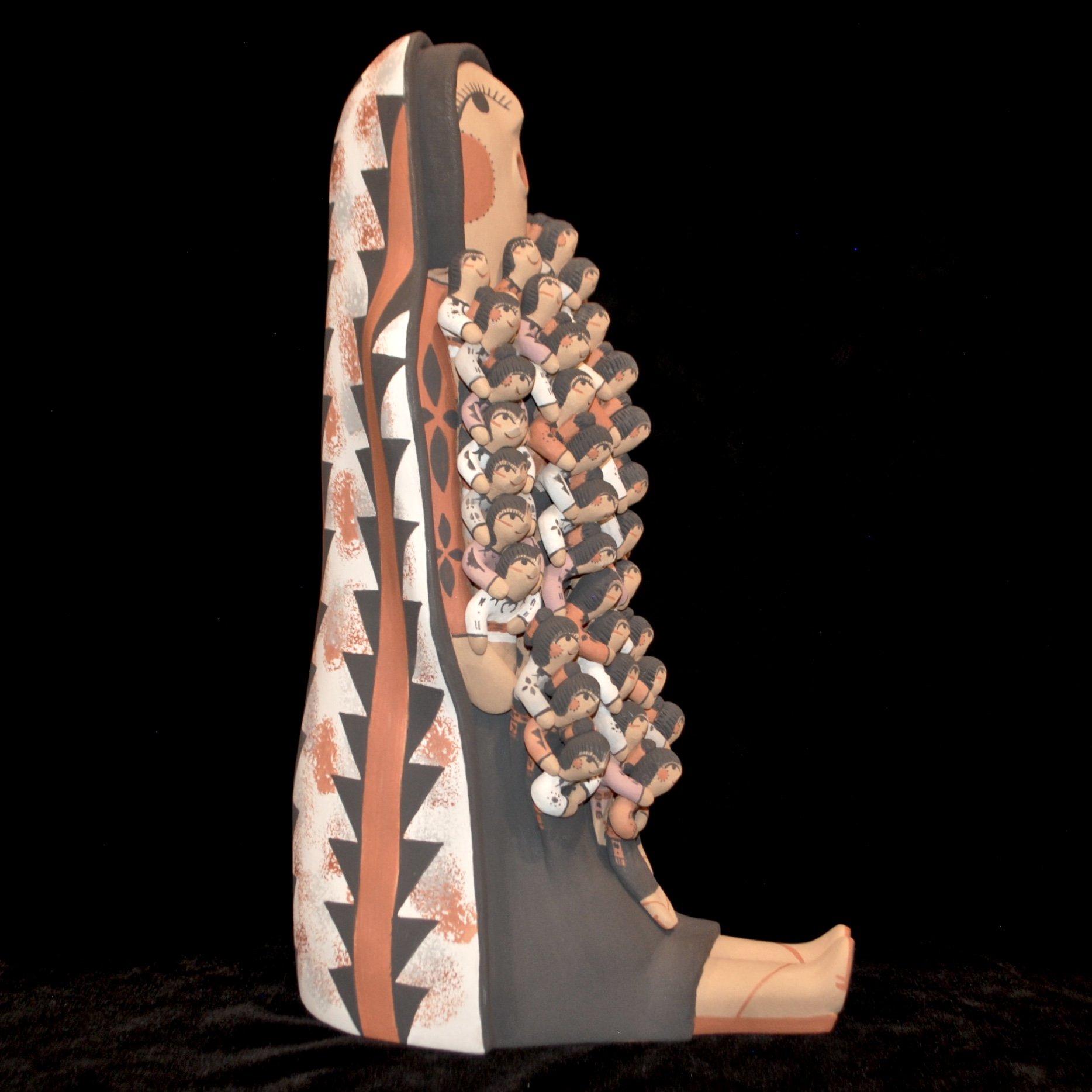
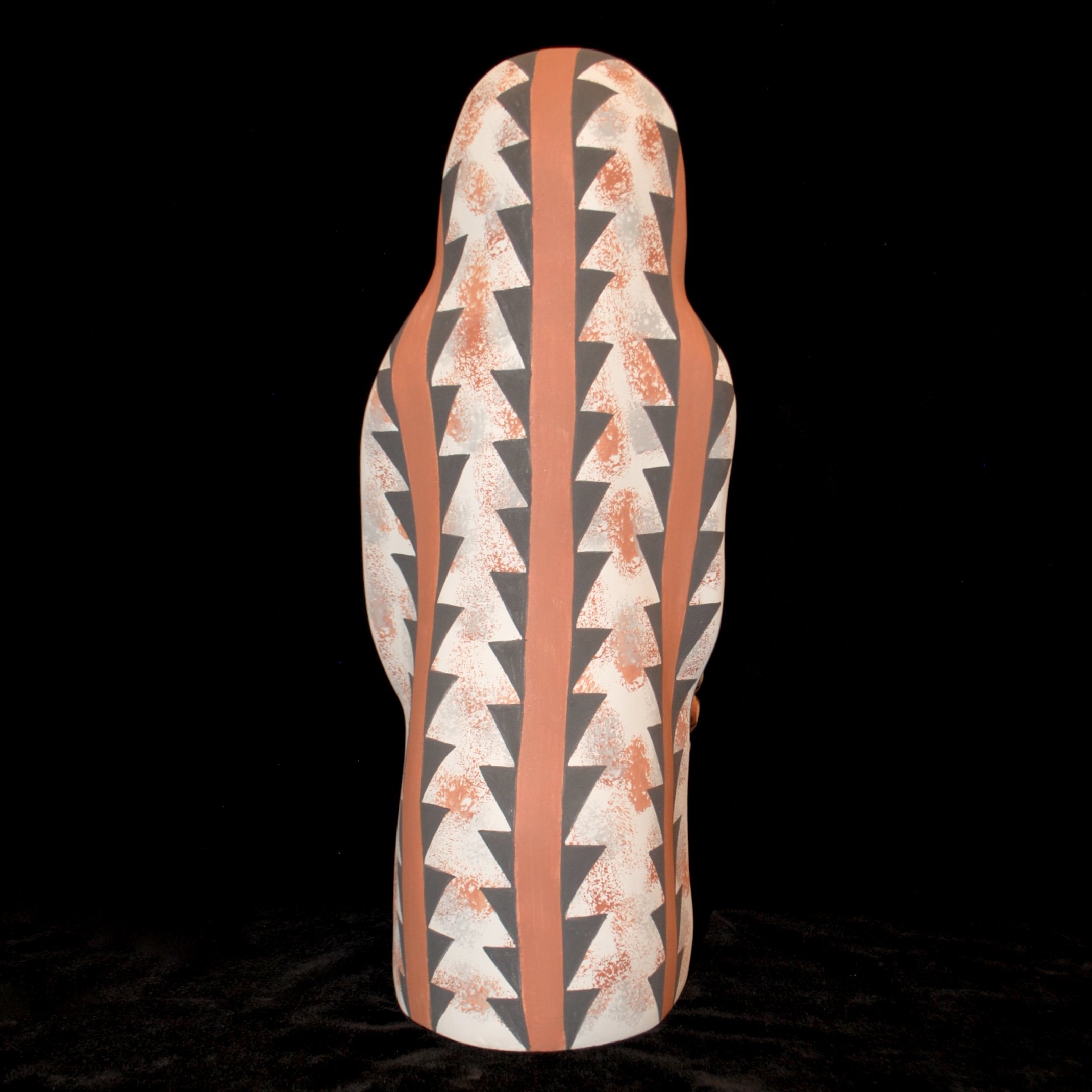
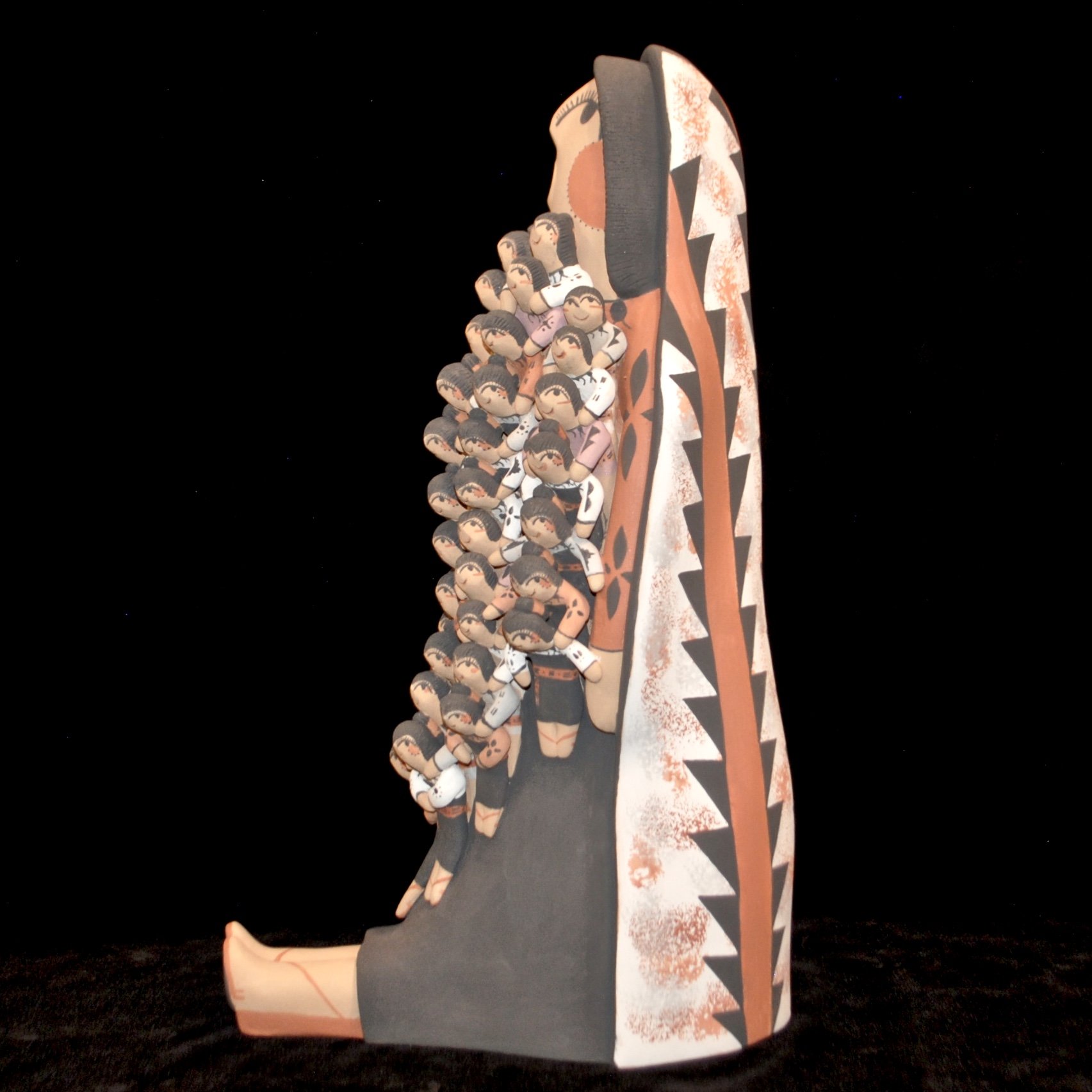
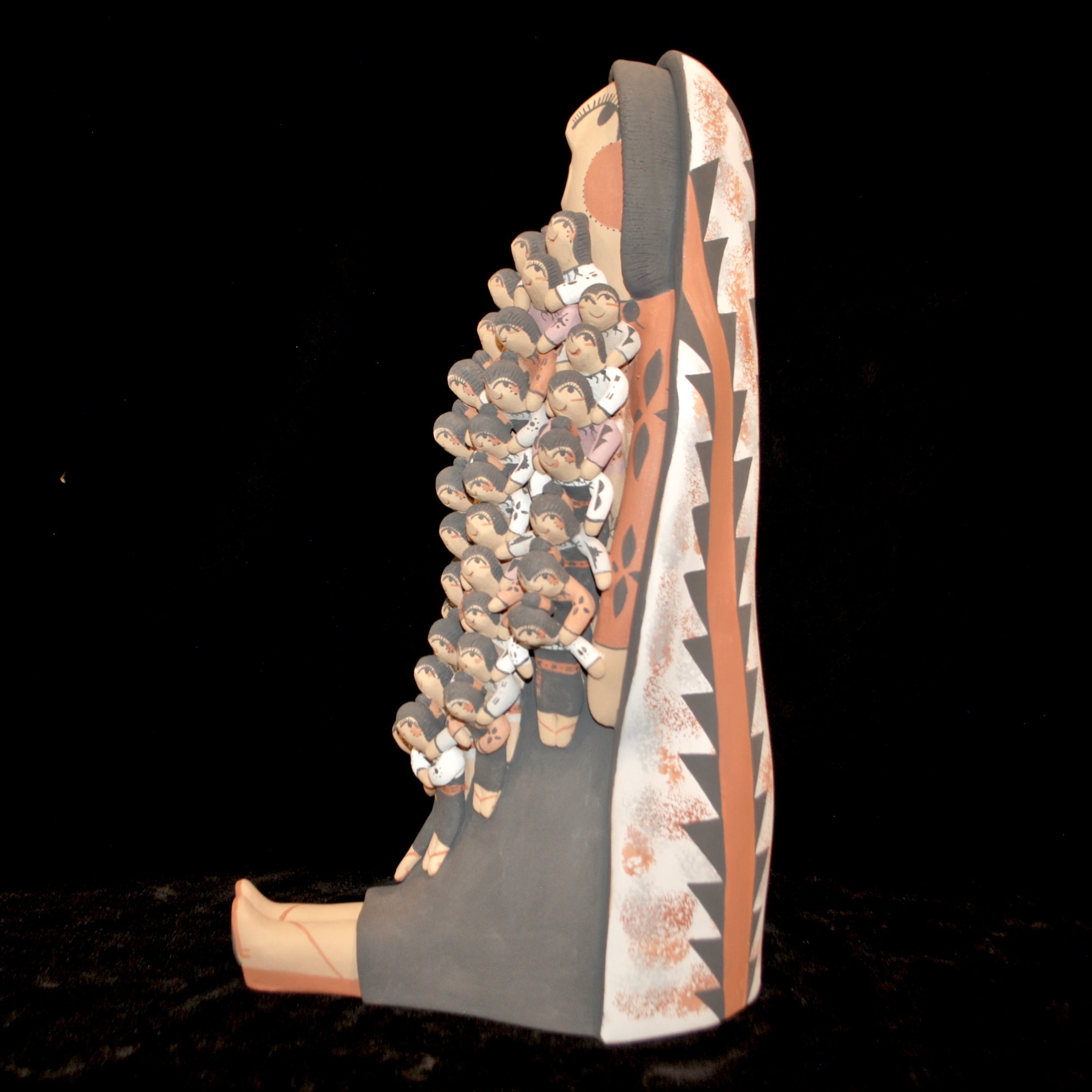
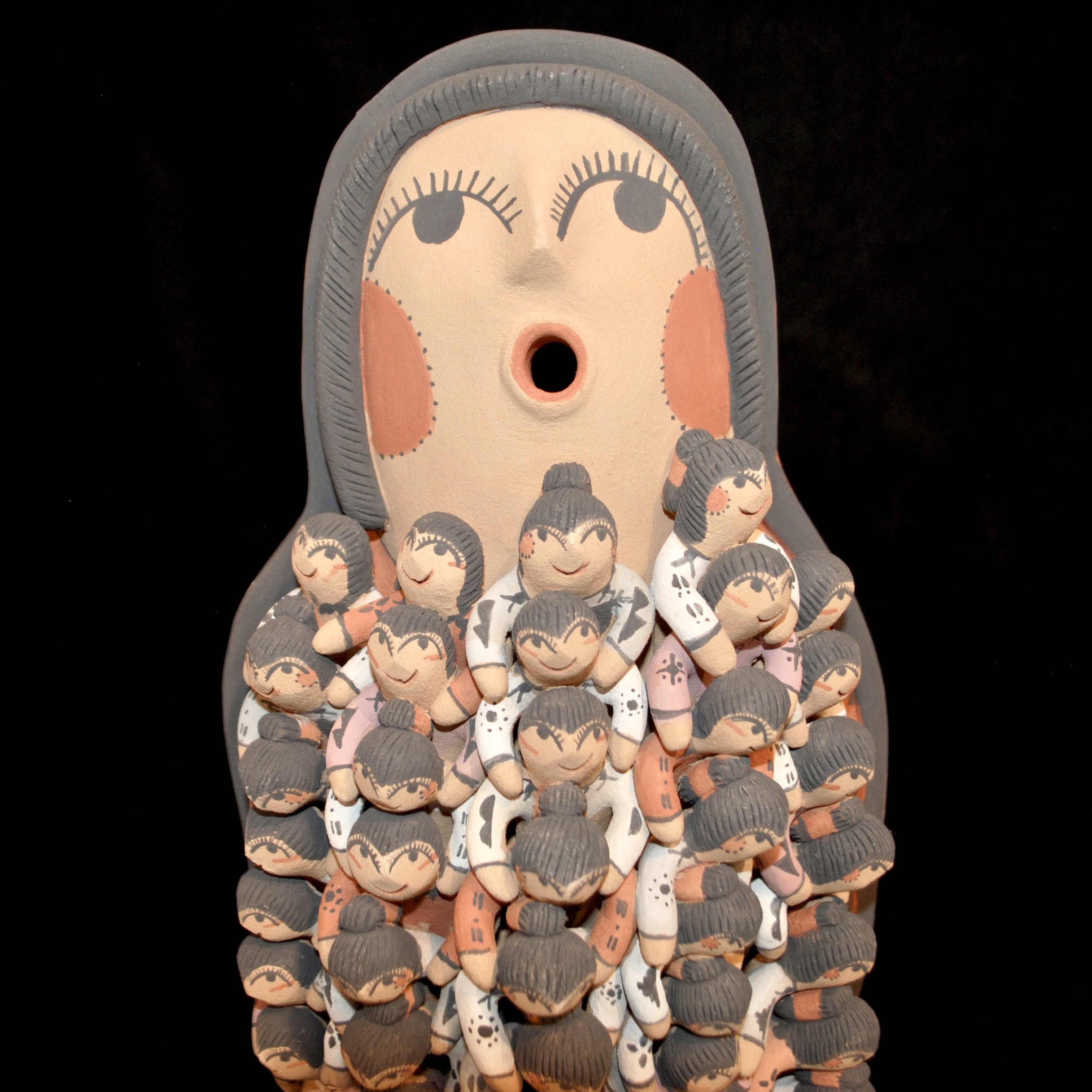
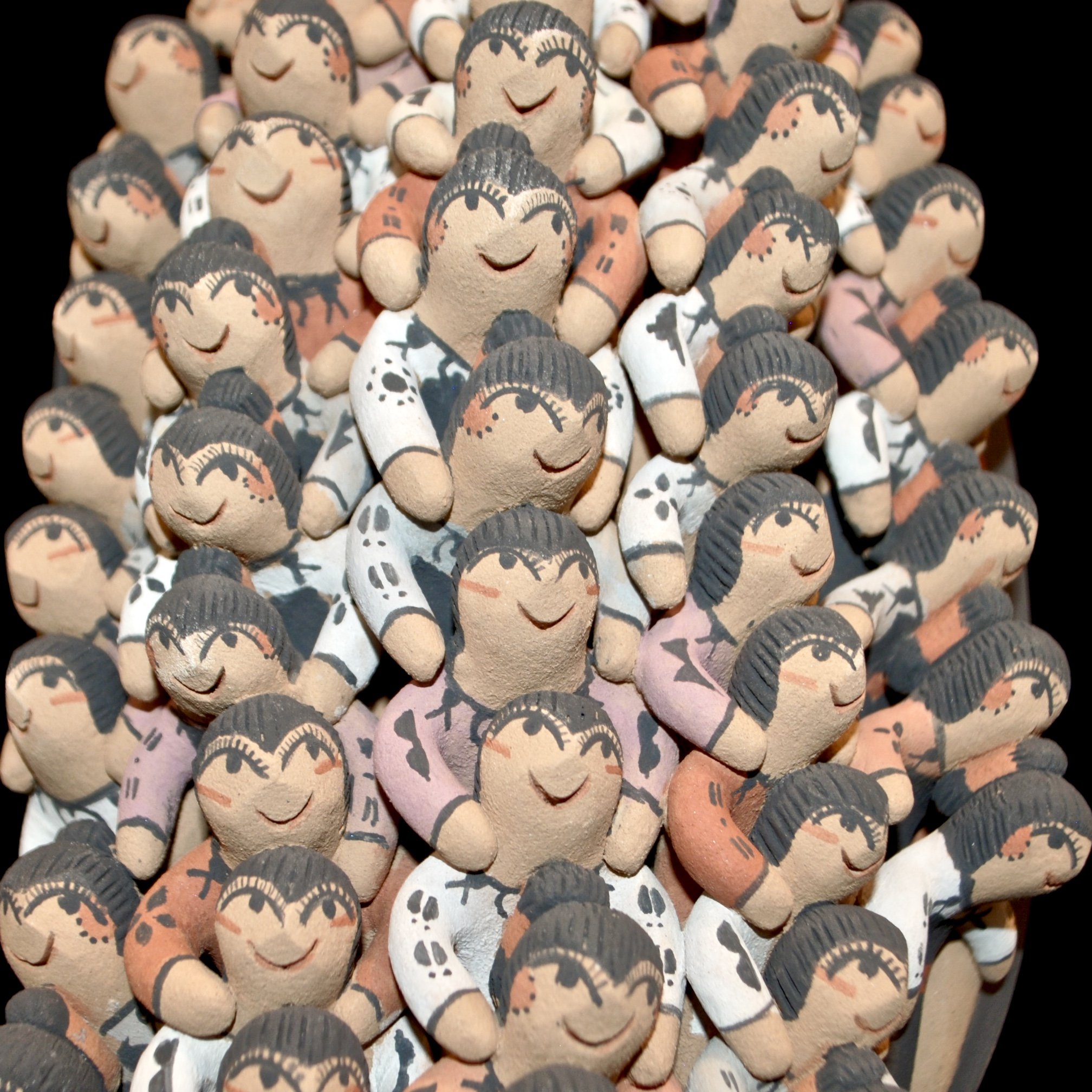

Large Jemez 51 Baby Pueblo Storyteller by Clifford Kim Fragua
Large Jemez Pueblo storyteller with 51 babies, hand-made by Clifford Kim Fragua with Jemez Pueblo pottery clay and hand-painted with natural clay slip and wild spinach paint. Approx: 17 1/2" x 6 x 10 1/2"
Large Jemez Pueblo storyteller with 51 babies, hand-made by Clifford Kim Fragua with Jemez Pueblo pottery clay and hand-painted with natural clay slip and wild spinach paint. Approx: 17 1/2" x 6 x 10 1/2"
Clifford Kim Fragua
Clifford Kim Fragua is a Native American artist from Jemez Pueblo. He was born in 1957 and has been hand-making pottery sculptures since 1970. Clifford was inspired to learn the art of clay sculpting from his Mother, the late Grace L. Fragua.
Clifford works with traditional materials and techniques. The clay he sculpts with is found on and around Jemez Pueblo. He uses this same clay to make the natural paint that decorates each piece. Clifford prepares his clay by drying, grinding, sifting, and mixing it with water once again, in a process that can take several months. He then meticulously hand pinches, air dries, hand-paints and wood fires each piece.
Clifford’s work is a unique blend of the traditional and contemporary styles, producing one of a kind pieces. He specializes in handmade storytellers, humorous koshares (ceremonial clowns), animals figurines and corn maidens.
Awards:
-1992 Gallup Ceremonial 1st place
-1992 Totah Farmington Festival 2nd & 3rd
Publications:
-Southern Pueblo Pottery 2,000 Artist Biographies
-Storytellers and Other Figurative Pottery
Storytellers
Figurative pottery comes from an old tradition. Prehistoric potters made several different animal and human forms. The Spanish clergy, who arrived in New Mexico, in the sixteenth and seventeenth centuries were zealous in destroying these pieces. A result of this persecution was a 400 year gap in Middle Rio Grande figurative pottery pieces. There is no evidence of these pieces from the 1500’s to 1875.
Helen Cordero created the first storyteller in 1964. Before Helen, there was a figure called the singing mother that had one child on the lap. Helen modeled her figure on her grandfather, and had five children climbing on him, and the modern storyteller was born. In 1965 Helen took first place with one of her storytellers at SWAIA’S Santa Fe Indian Market. By 1979, there were ten storyteller potters and their numbers grew rapidly. Today, families have trademark features on their storytellers. The form of the figure, a facial expression, traditional slips and contemporary colors set their pieces apart from each other. Some families create animals, some human forms both male and female. Artists ususaly set their prices by the number of children on each storyteller.

